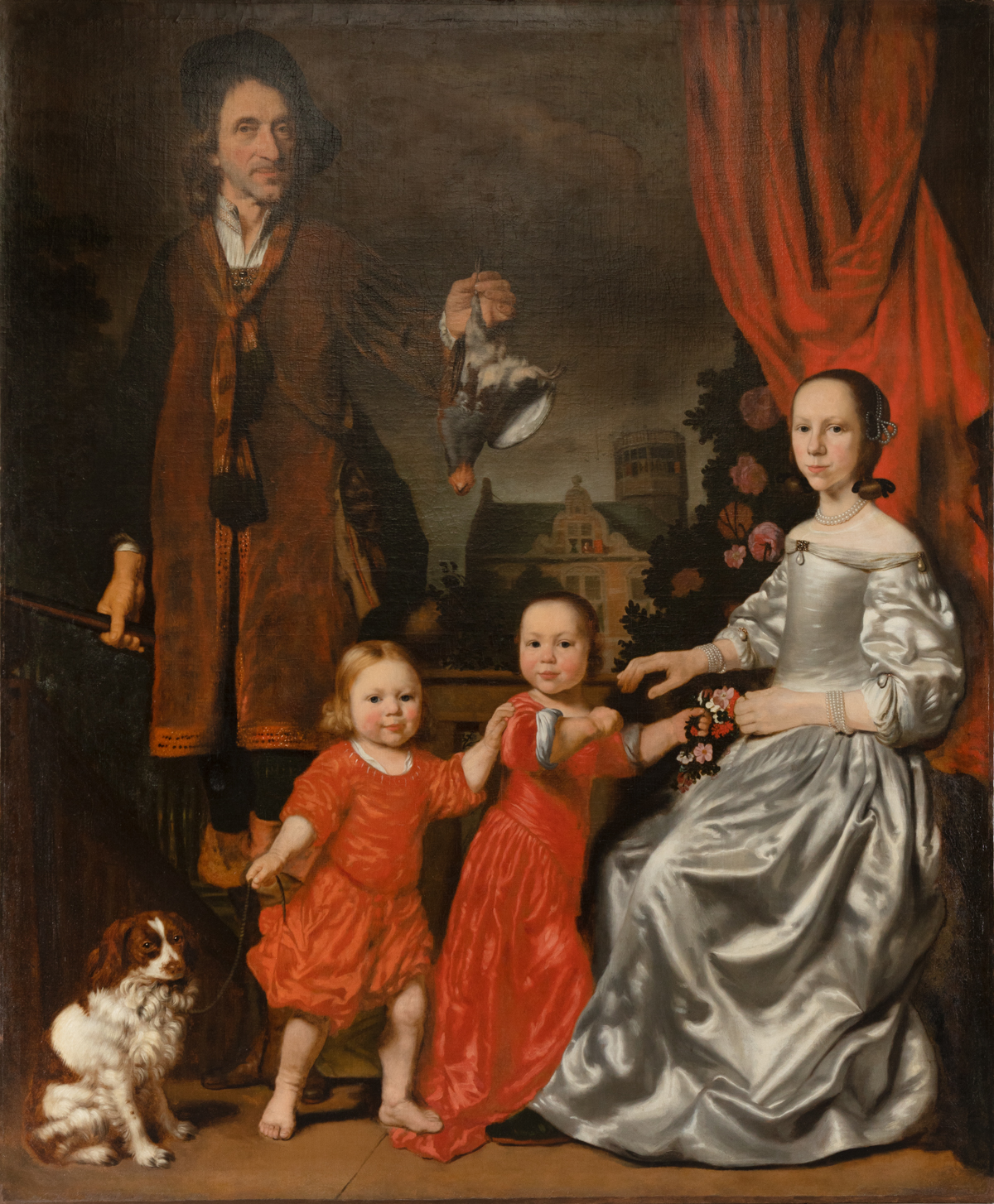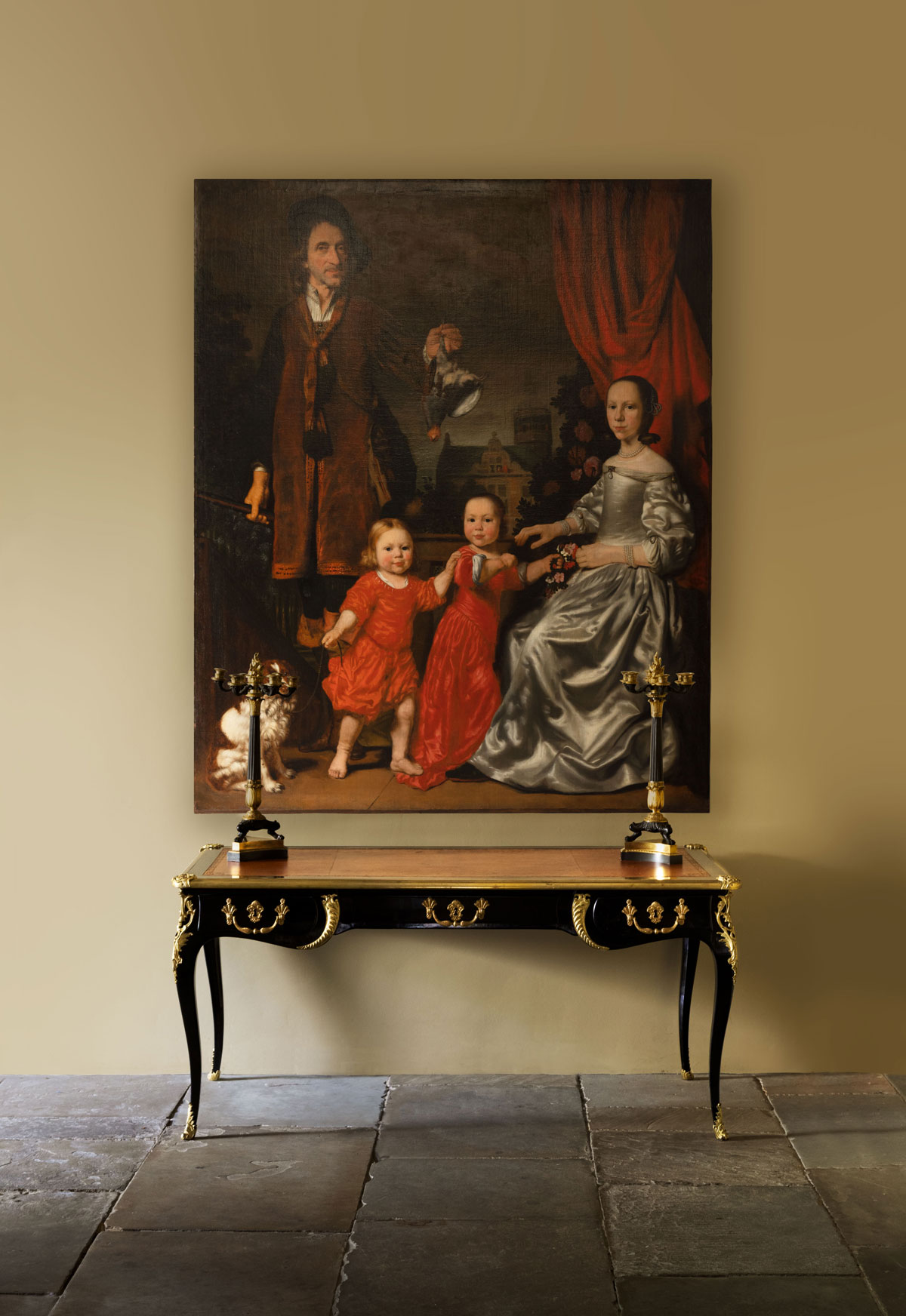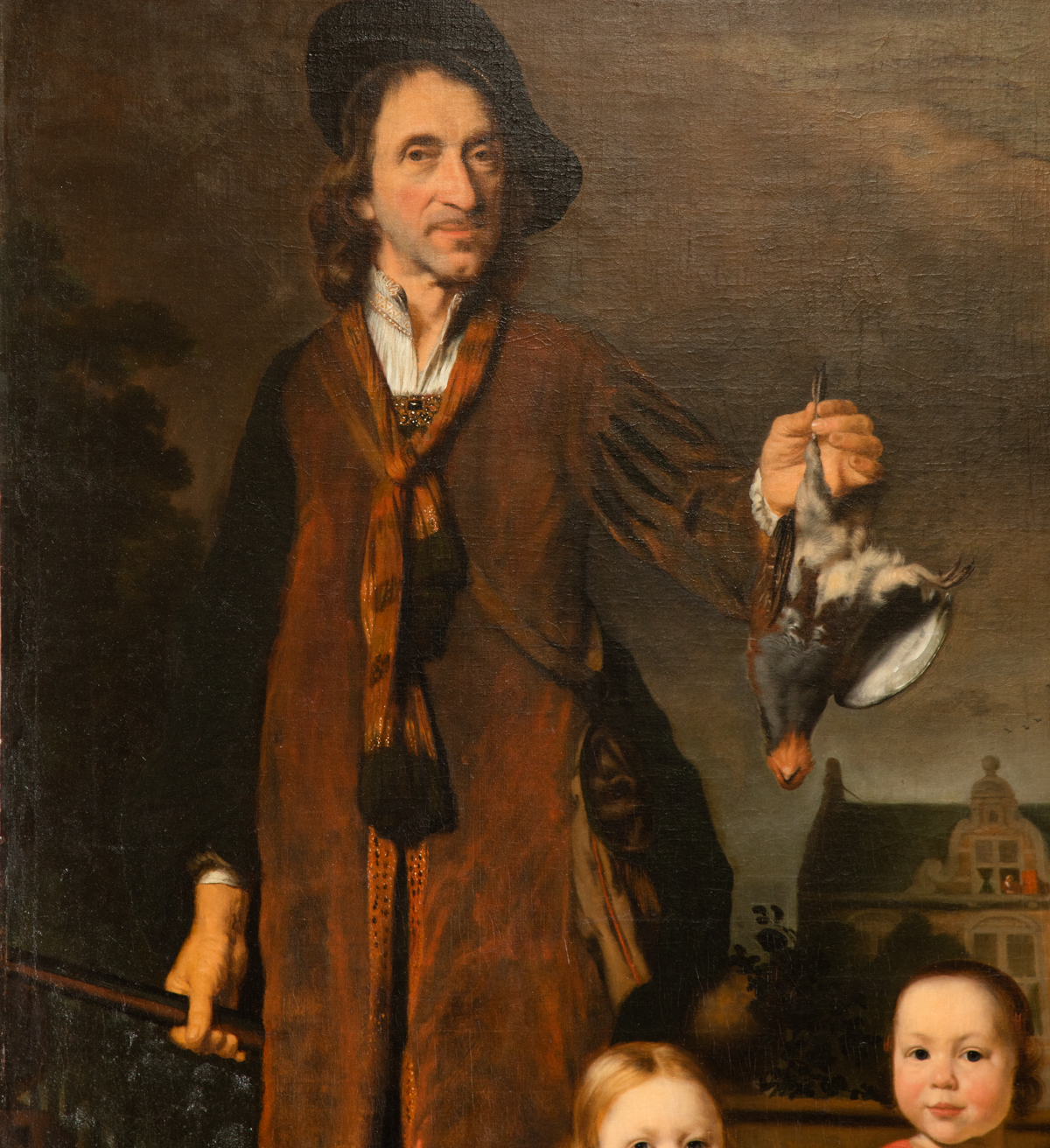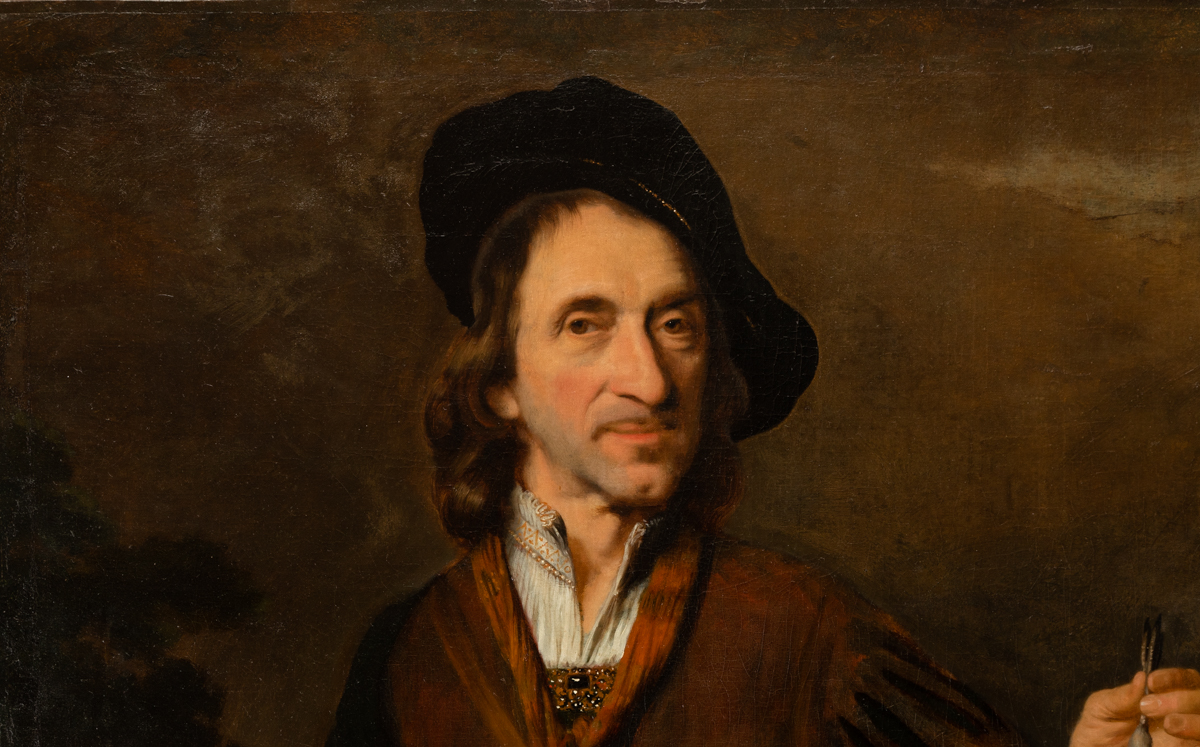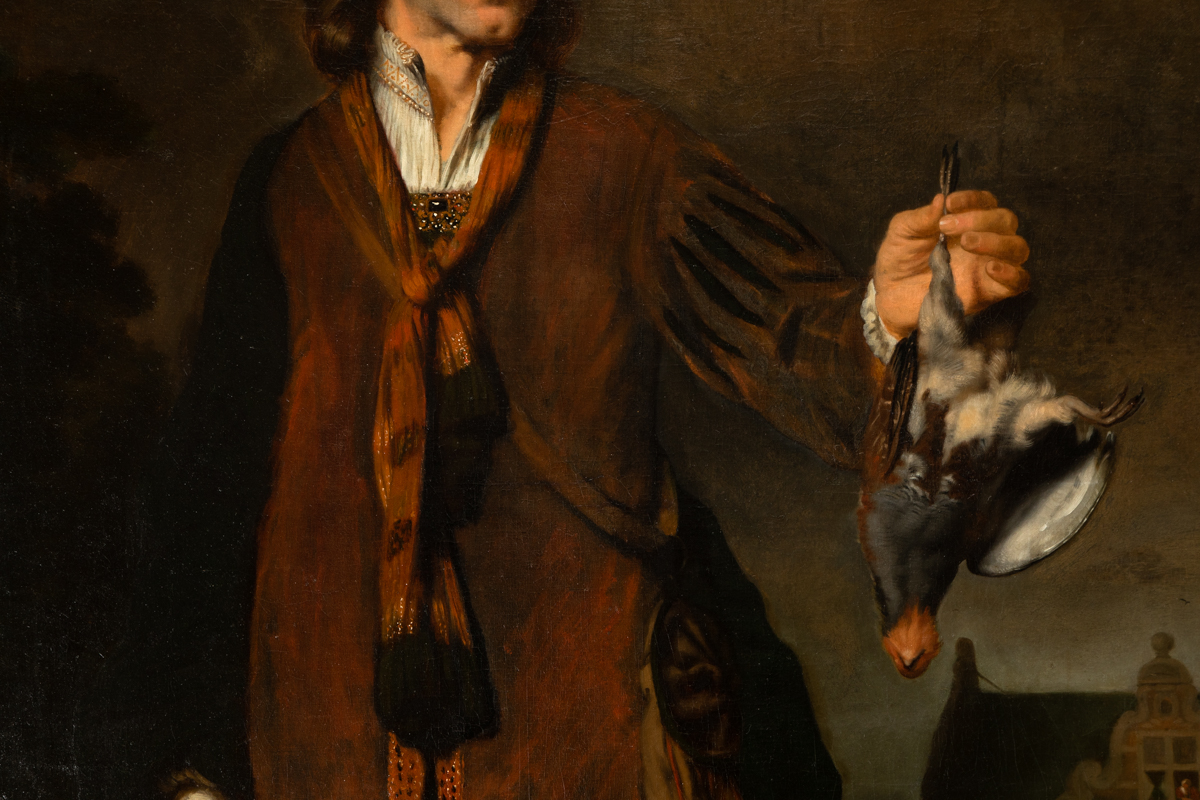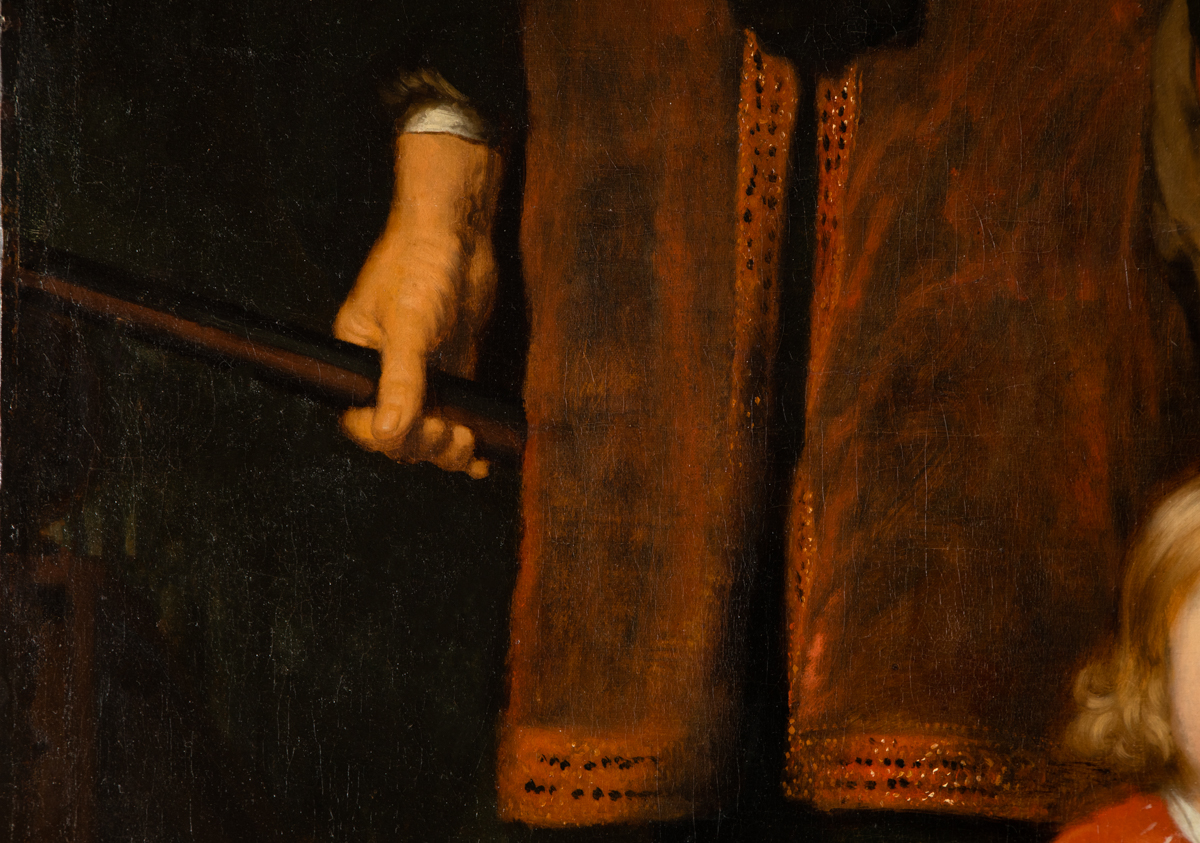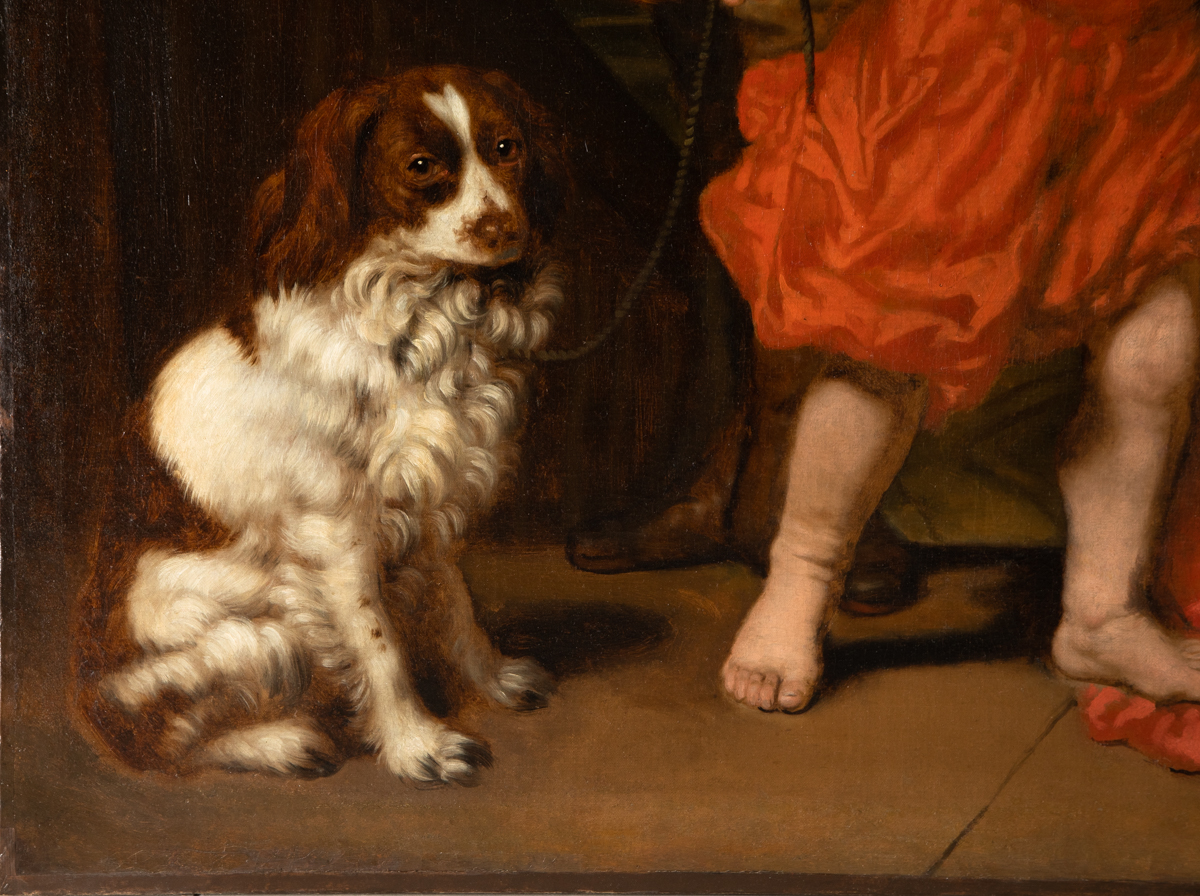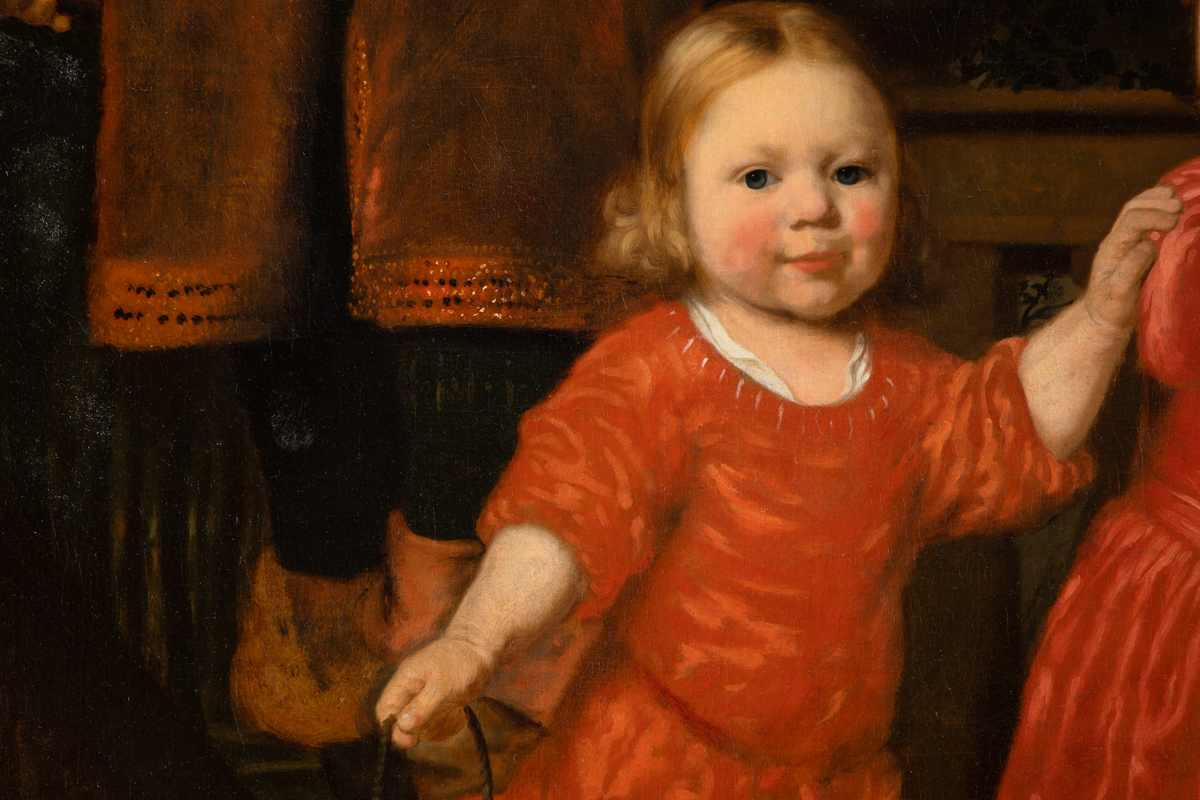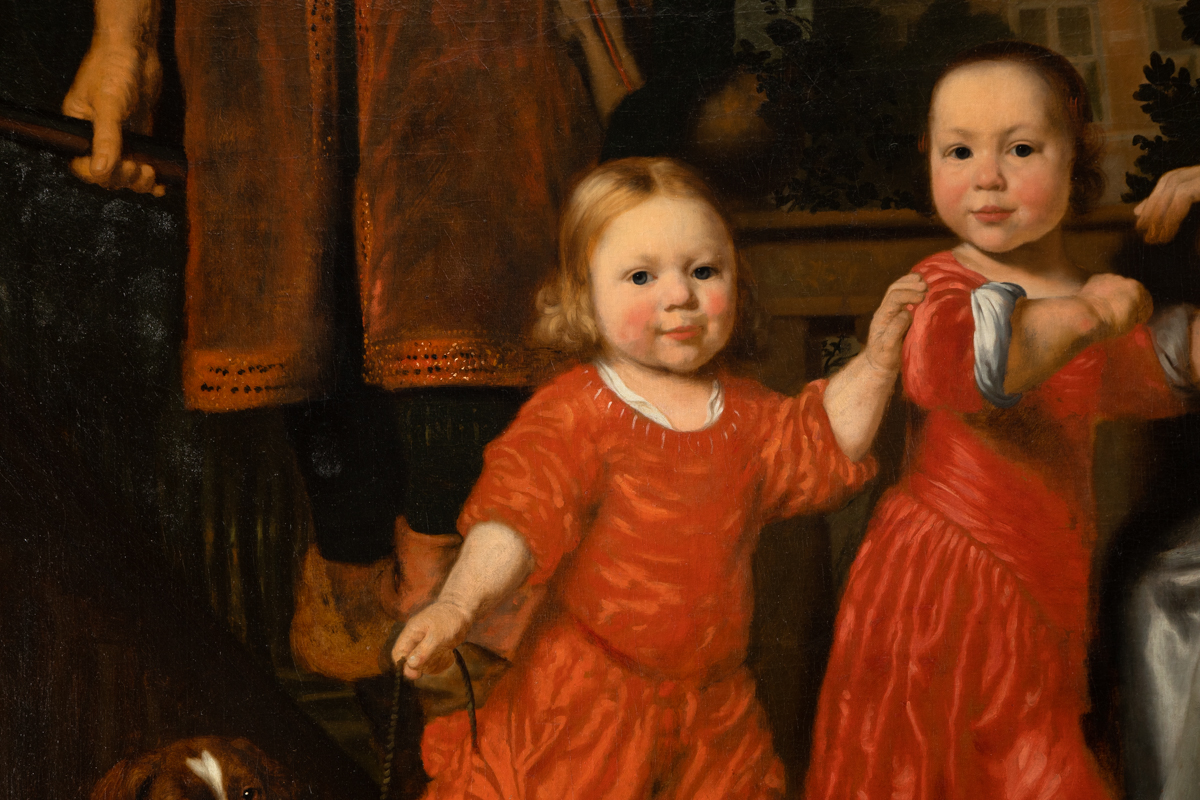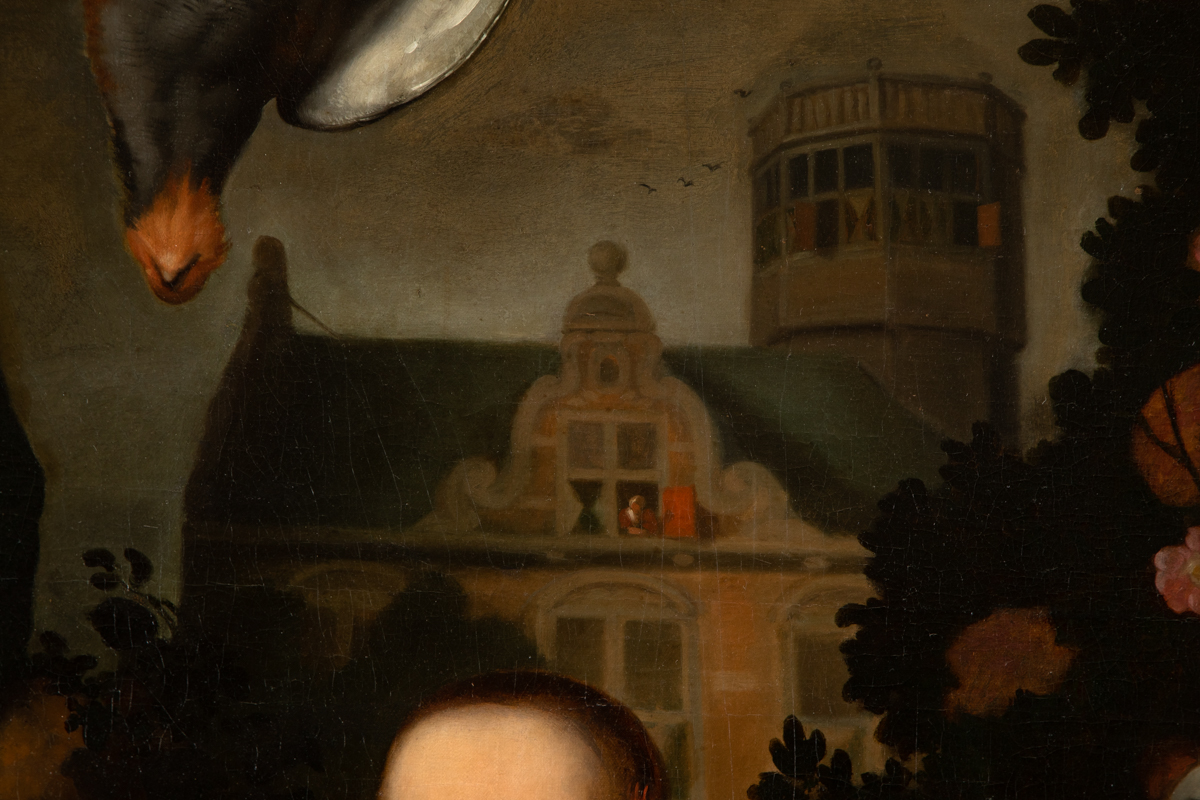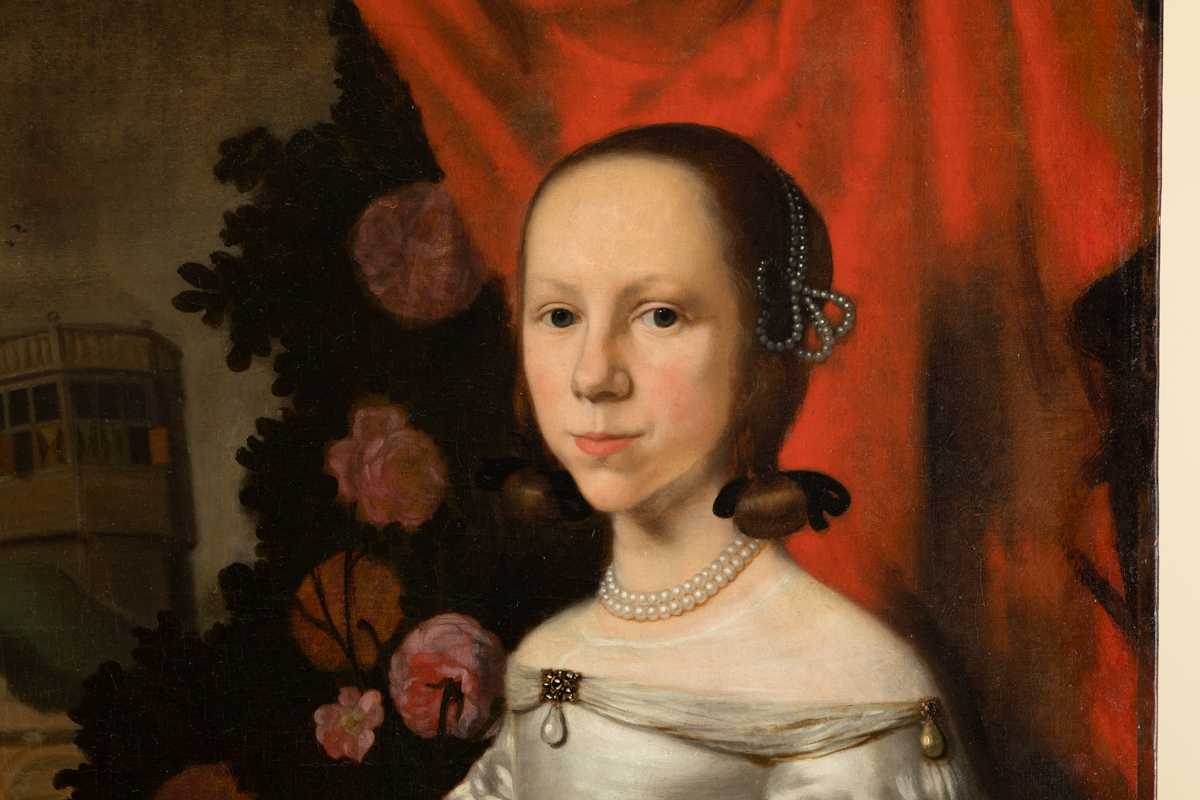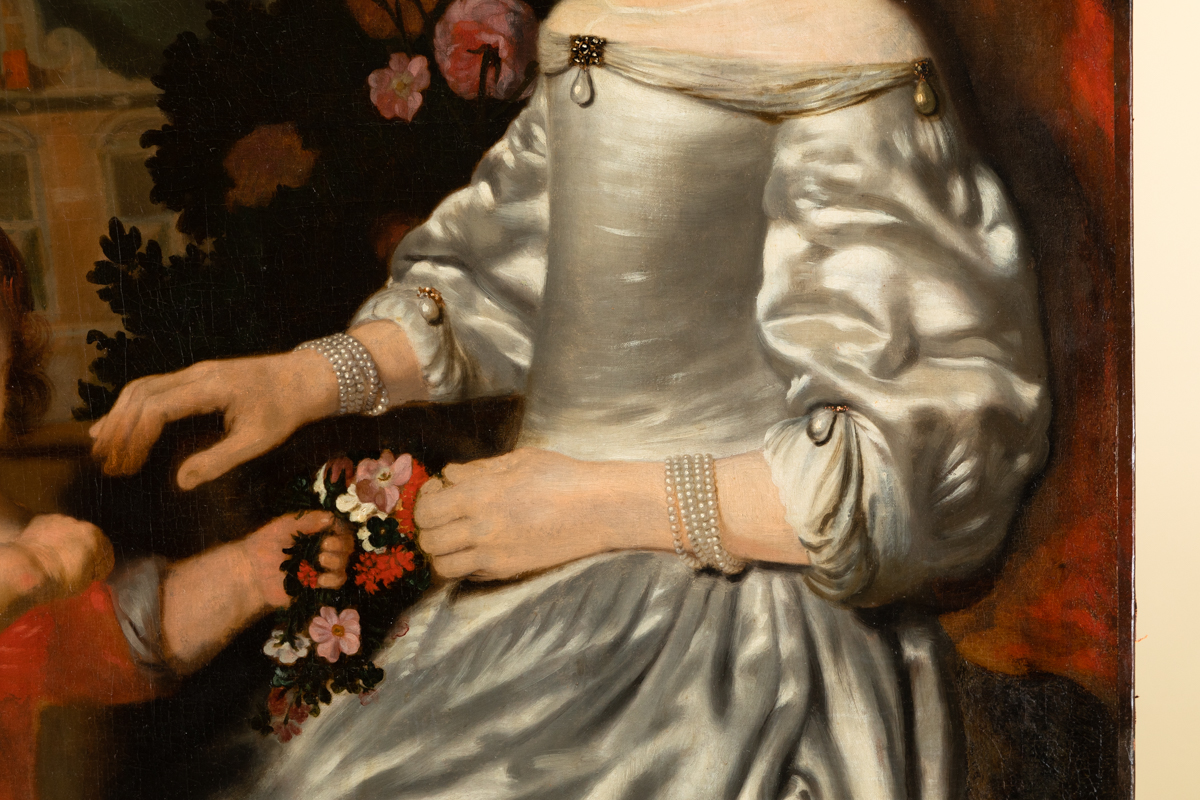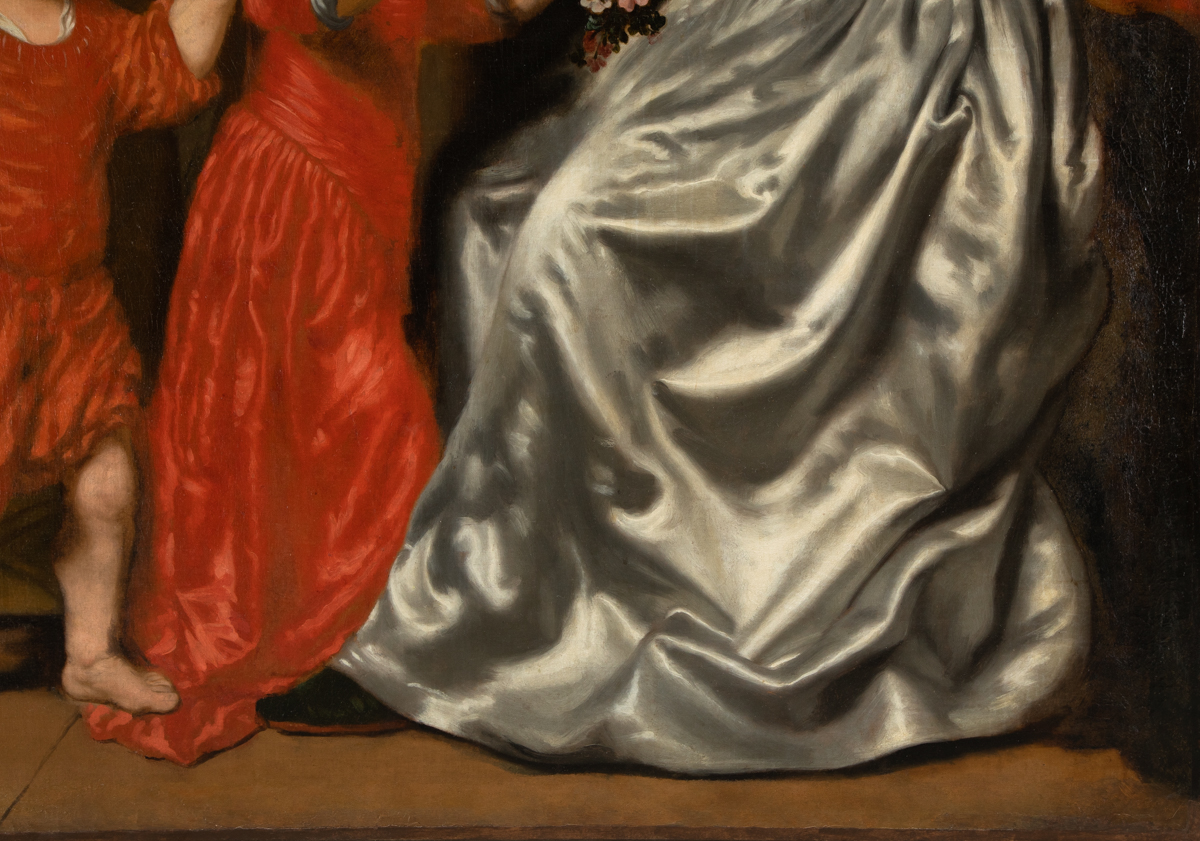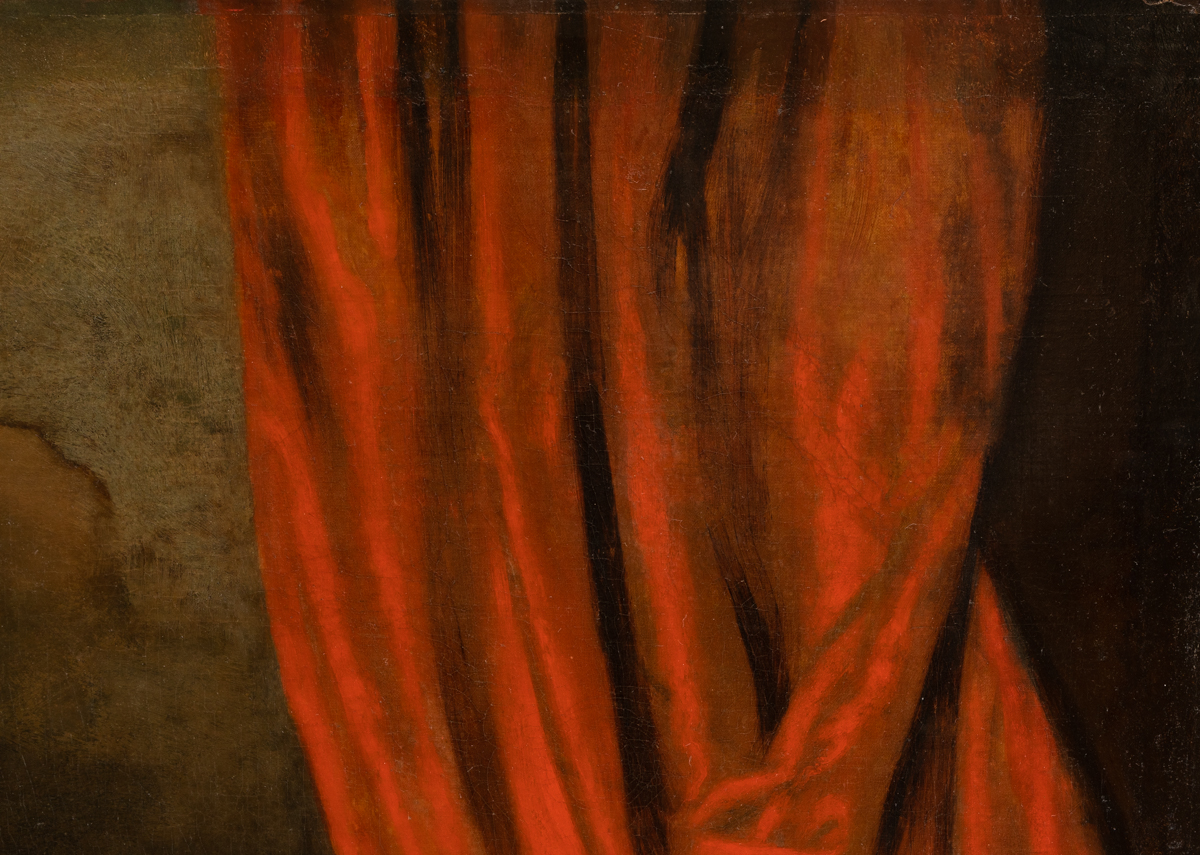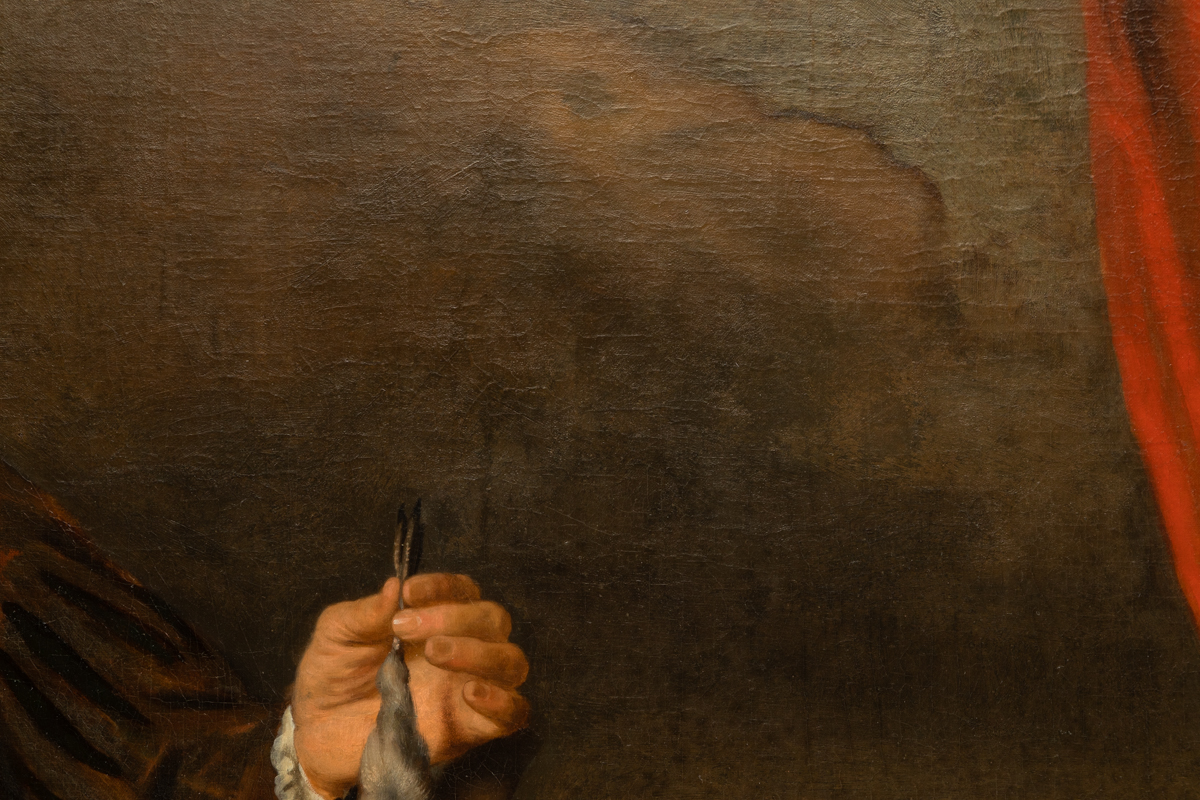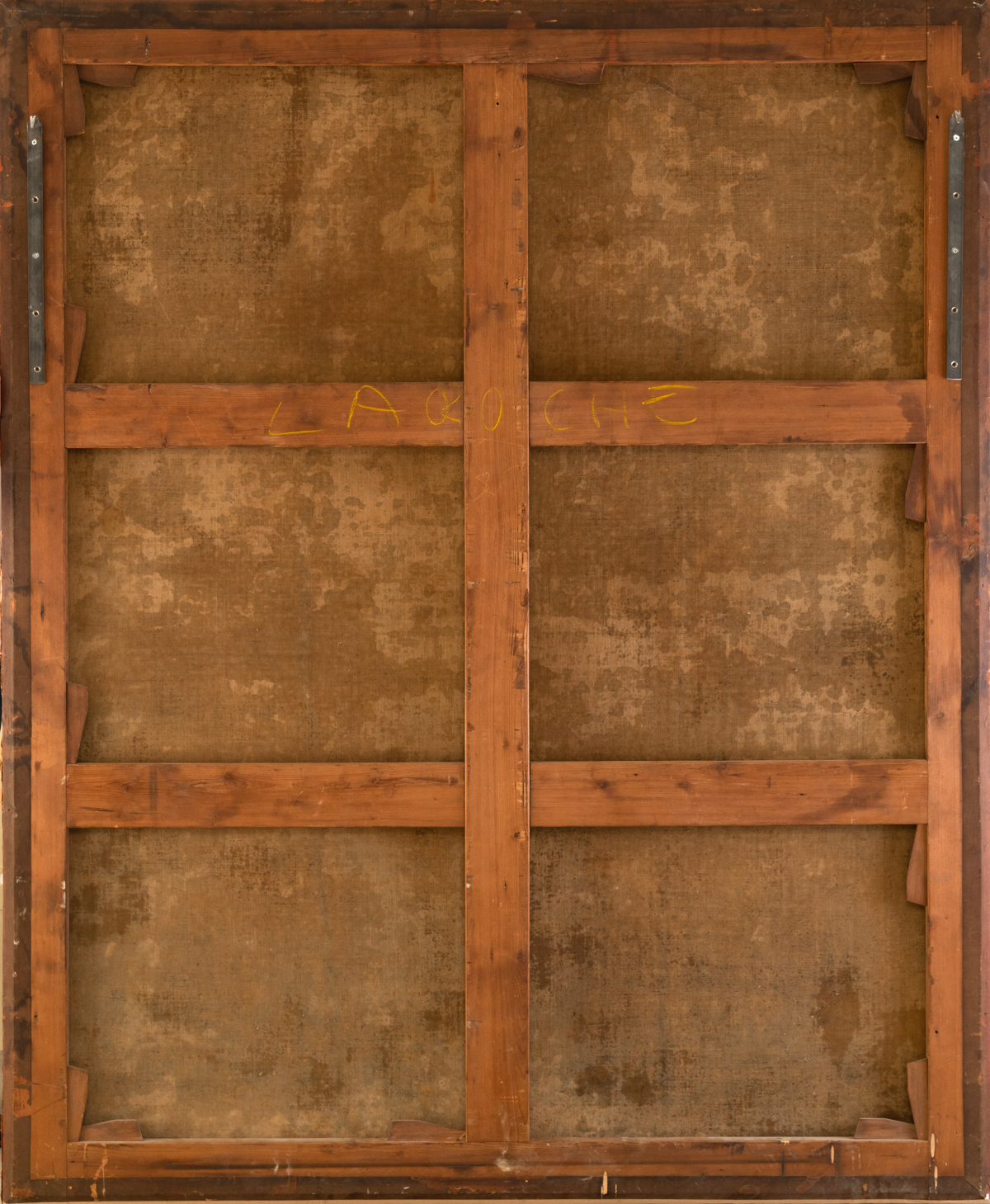Oil on Canvas, un-framed, The Netherlands c.1660
Large portrait of a couple with their two young children and spaniel. The man standing on the left of the portrait wears an informal long hunting jacket with a brooch at the top. He holds up a partridge in his left hand and a gun is partially visible in his right. His young wife is seated on the right hand side in front of a red curtain in a silver coloured silk dress adorned with pearls and jewels. She also wears pearls around her neck, wrists and in her hair. She holds a small bunch of flowers in her left hand. In the middle stand the two children, a girl and a boy both dressed in bright red, one of them holding the lead of the spaniel. In the background is pictured a large Dutch house with a dormer window typical of the period and geography. One of the of the panes is open and a fifth person can be seen looking out from there in the distance.
Hunting in the Netherlands in the 17th century was a pastime reserved for nobility and so despite the casual apparel of the gentleman rather than the usual ruff and formal coat we are in no doubt of the family's high status, emphasised by the many jewels worn by his wife. The informal nature of the portrait, the children with bare feet and the gentleman in hunting dress holding a trophy, gives the impression of a happy household appreciative of earthly pleasures. The seated spaniel at the bottom left is symbolic of faithfulness, whilst the posey of flowers held by the wife indicate love, life and growth. Some mystery remains however in the small figure seen at the window in the house behind.
Thomas de Keyser was born in Amsterdam in 1596 the son of Hendrick de Keyser, the foremost sculptor and architect in the northern Netherlands. From 1616 to 1618, he trained with his father in architecture under the auspices of the stonemasons’ guild, and with his brother Pieter, he joined the Guild of St Luke as a sculptor in 1622. Although unknown it seems likely that he had already received some training as a painter at this point and his first painting can also be dated to this year, 'Portrait of Three Children and a Man' exhibited now at the Rijk Museum in Amsterdam.
De Keyser's career as a portrait artist flourished between 1625 and 1635, however he rejoined the stonemason's guild in 1640 where he was foremost a merchant in cut stone for the following twenty years. In 1660 he returned to painting again with some constancy until his death in 1667.
Almost every portrait type produced in the Dutch Republic in the 17th century is represented in the 100 or so paintings that make up Thomas de Keyser’s oeuvre. In addition to the substantial innovations he brought to existing portrait types, such as the civic guard piece, De Keyser evolved one completely new one, the small-scale full-length portrait. The interior settings and active poses of the sitters in many of these works make them akin to contemporary genre paintings. De Keyser also made history paintings and portraits historiés, another painting type that wed different genres.
Aside from his painting and stone mason work Keyser was also one of 247 men and women to sign a petition in 1628 calling for legal toleration for worship by the members of the Remonstrant Church, and was among the founding members of the congregation when it was granted legal status in 1631.
HEIGHT: 201 cm (6'7")
WIDTH: 164 cm (5'5")
DEPTH: 2.5 cm (1")
£POA |
